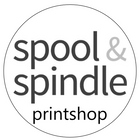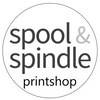Interfacing about Interfacing
We've all been there; you have a pattern that requires interfacing, but they either don't tell you what kind to use, suggest a brand you can't find, or say something vague like "medium firm". So what kind do you need? What even IS interfacing? We're here to break it down.
What is Interfacing?
Interfacing is a fabric used to support, shape, or reinforce areas of your project. You can use any fabric for this use as long as it meets the needs of your project, but it's generally easier and more convenient to use purpose-made interfacing.
Do I REALLY need interfacing for my project?
The short answer is Yes. The slightly longer answer is.... Probably Yes. Interfacing keeps your collars and cuffs crisp, gives support and reinforcement to waists, and gives structure to bags. It can keep a neckline from stretching and sagging, it can keep buttons and buttonholes in place, and for some projects, it is completely indispensable. Whether you use it or not is up to you, but you should take the project and the fabric you're using into consideration when deciding if you're using it or not.
Types of Interfacing
There are three main types of interfacing: Woven, Knit, and Non-Woven, and all three of these can be either fusible, or sew-in.
Fusible interfacing has a layer of interfacing and a layer of adhesive. It's meant to fuse or stick to your fabric. This makes it much easier to handle and sew, since it acts as one layer, instead of multiple layers. There are a few different kinds of fusible; most you fuse by ironing the interfacing to your fabric, but there are also some that are like a giant sticker; where you can peel the backing off and stick it down. Fusible interfacing can also be 1-sided or 2-sided; meaning it will either fuse on only one side, or on both. If you're using 2-sided, be sure that you have the interfacing sandwiched between the fabrics you're adhering it to before ironing; or else you'll have a sticky mess on your iron or board. For 1-sided interfacing, generally the rough, pebbly side is the adhesive side. Heat fusible interfacing must be set with high heat, so isn't appropriate for fabrics that can be damaged by ironing at a high level. As well, over time, parts of the adhesive can become unstuck if it hasn't been adhered well (and sometimes, if the item is washed often, this will happen too). For this reason, we recommend adhering the interfacing to the lining fabric or facing, rather the the exterior fabric.
Sew-In (also called non-fusible) interfacing does not have an adhesive, and you must sew it in to the garment or project to keep it in place. This can be a bit trickier, but is essential if you are interfacing fabrics which can't take high heat (like rayon).
Knit Interfacing can be fusible or non-fusible. It is an interfacing that has a knit base (frequently polyester), so the interfacing can stretch with the fabric. You must take care to follow the grainlines marked on your pattern pieces so this interfacing will stretch in the appropriate direction.
Woven Interfacing can be fusible or non-fusible. It is an interfacing that has a woven base (can be cotton, polyester, or other fibres). It will stretch on the bias like all woven fabrics, so you must take care to follow the grainline. Woven interfacing made from natural fibres can be pre-washed to help remove shrinkage; gently place the fabric in a warm water bath for 20 minutes, and allow to drip dry.
Non-Woven Interfacing can be fusible or non-fusible. It is neither knit nor woven, but instead made of fibres that have been adhered or felted together. It does not have a grainline, and you can cut your pieces out in any direction. It is frequently made of polyester.
Others: You can use almost any fabric as interfacing, as long as it has the properties you are looking for. There are also specialty interfacing, such as foam, thermal insulators, buckram (a heavy starched cotton), horsehair (not always actually made of horsehair), and more. Strictly speaking, most of these would fall into the Knit/Woven/Non-Woven continuum (buckram is a woven, the foam would be non-woven, etc).
Weight and Width of Interfacing
Interfacing, regardless of type, comes in a variety of weights and widths. In general, the most common interfacings, such as those from Pellon, are 40"-44" wide. There are of course, some exceptions, so you should check the widths listed carefully before calculating how much to purchase.
For weight, you will want to take your project and fabric into consideration. If you are making a basket or bag, you would want a heavyweight, sturdy interfacing. A coat collar and button band would need heavier weight interfacing than a shirt made from cotton lawn. In general, for garments, you want a weight of interfacing that is similar to, or lighter than, the fabric you are using for the project.

